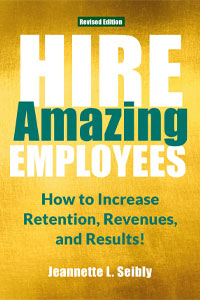
As a boss or leader, have you ever wondered if you’re the right one for your company? It’s a common concern that often goes unanswered due to fear and a reluctance to admit you need help. But remember, every great boss and leader started somewhere, and with the right guidance and self-reflection, you can grow into the role that your company needs.
The added challenge often overlooked is that when bosses and leaders are hired or promoted, the company focuses on today’s skills and overlooks the talents, skills, and natural abilities required to excel at the next level.
Decades ago, Timothy, a former company president, and his partner, Susan, started a company to fulfill their mutual dream. But when Susan suddenly passed away 10 years later, Timothy took over running the company. But he did not have the talent or interest to do the job—he did so out of ego, pride, and fear of being humiliated if he didn’t.
The consequences of not aligning talents with leadership roles were evident in Timothy’s case. He and several of his key people lacked the required level of integrity and competence, failing to develop the trust of others. This led to a toxic and discriminatory environment, costing the company money, people, and credibility. Ultimately, the company was forced to shut its doors.
Today, Timothy still believes he successfully built his dream due to his wealth. However, he has failed to recognize that most people do not positively remember him or the company—all because he was not the right leader for his company. This serves as a stark reminder of the consequences of not being the right leader, a lesson that every boss and leader should take to heart.
Most bosses and leaders want to be effective and be remembered for their contributions. Achieving this requires becoming and then continuing to be the right leader. This journey starts with self-awareness and self-reflection, empowering you to identify your strengths and areas for improvement.
Are You the Right Leader for Your Company?
Get Real About Your True Talents. In an ideal world, everyone could do any job they wanted. In the real world, it doesn’t work that way. If you don’t have the interests, thinking style, and core behaviors to fit the job, forcing yourself (and others) into jobs or positions where they struggle, is a disaster on many levels: loss of results, revenues, reputation, and retention. It’s not just about your personal success, but also about the success and sustainability of your company.
Too often, we attempt to mimic others who have talents that we don’t possess. We take jobs that pay more or provide a better job title even when the job doesn’t fit our natural talents and strengths. The result? It will derail our career ambitions.
I’ve talked with many talented business people who rely on circular logic to rationalize why they dream of and pursue the wrong jobs! In the meantime, they’re sacrificing their health, well-being, family time, reputation, integrity, and quality of results. As most former bosses and leaders will tell you, “It’s not worth the price they had to pay!”
To avoid this problem, work with an executive coach who uses a qualified job fit selection assessment and has the experience and insights to help you get real. Focusing on what you really, really, really want to achieve and pursuing it is well worth the investment of time and money.
Accept Jobs Based on Job Fit. We often accept job offers, job promotions, or job transitions that are not in our best interests, although we tell ourselves the ‘big lie’ that we can fake it. Do you know of or remember “The Peter Principle? It is the observation that people tend to be promoted to their level of incompetence.” Don’t let this happen to you! Reread Get Real About Your True Talents in the paragraph above.
Trust has two dimensions: competence and integrity.
We can forgive mistakes of competence.
Mistakes of integrity are harder to overcome. Simon Sinek
Develop Trust in Yourself. Do you honor your word to yourself? Your family and friends? Or can they count on you offering the same old, same old excuse of being too busy, not having enough money, or some other common rationale?
If you wish to develop into a trustworthy boss or leader, the ‘proof’ is first honoring your word to yourself. Start small. Do one thing without fail and continue to build from there. Remember, one day at a time – and consistency is required.
Develop Trust with Your Team. As a boss or leader, it’s no longer about you! It’s about your ability to hire the right people for job fit and then get out of their way so they can excel. You’re there as a resource, guide, and advocate!
Building trust requires honoring your commitments to the company and its people. Your decisions and actions must align with the company’s mission and values, and you must consistently, without fail, hold everyone accountable (including yourself).
Questions to ask yourself:
- Am I someone others want to work with?
- Do I have the competence required?
- Am I able to develop others to excel?
- Am I able to ask for help, even when I don’t think I need it?
- Do I fail to take trusted advice and do it my way by cutting corners?
- Do I blame others for my poor decisions?
Be Happy. Too often, we become fixated on the type of job, job title, and pay/perks we believe will make us happy. But the truth is that happiness comes from using your inner power, developing self-confidence, and respecting your natural talents, gifts, and strengths.
Years ago, an executive told me, “Everyone is unhappy in their jobs. So, it shouldn’t matter if I fit the job or not.”
Sadly, many of you would agree! But the truth is, many opportunities are available today to create career paths that honor your talents, gifts, and strengths. It just takes you doing the right work!
Summary. In the long run, satisfaction and happiness are more important than a larger paycheck. You’ll learn that your health and well-being matter most — instead of waiting until you experience irreparable burnout to learn this invaluable lesson. Otherwise, it may be too late to make the needed changes as a boss and/or leader and leave a positive legacy.
©Jeannette Seibly 2024 All Rights Reserved
 Jeannette Seibly is a Talent Advisor/Leadership Results Coach with over 31 years of practical experience guiding leaders and bosses to improve their hiring, coaching, and managing practices and produce amazing results! And yes, achieving business success always starts with having the right people in the right jobs! She has been an Authorized PXT Select® Partner for over 32 years. Contact Jeannette to learn more about these state-of-the-art job-fit assessment tools or how to coach and manage your people to achieve incredible results.
Jeannette Seibly is a Talent Advisor/Leadership Results Coach with over 31 years of practical experience guiding leaders and bosses to improve their hiring, coaching, and managing practices and produce amazing results! And yes, achieving business success always starts with having the right people in the right jobs! She has been an Authorized PXT Select® Partner for over 32 years. Contact Jeannette to learn more about these state-of-the-art job-fit assessment tools or how to coach and manage your people to achieve incredible results.
A note from Jeannette: Do you want to improve your legacy as a boss and leader? It’s not too late to become the right boss or leader. If you’re frustrated or confused about how to make needed changes, you’re not alone! Let’s talk and use my 31+ years of resolving leadership and management issues before it’s too late. Contact me now!
 It’s time to talk it out! Are there days you dread managing people, projects, and your team’s financial performance? You’re not alone! Everyone has their blind spots! NOW is the time to get the guidance you need to make the right changes during 2024. I have extensive experience and wisdom guiding bosses and leaders to hire, coach, and manage their teams successfully. The bonus is that they achieve unprecedented results. Contact me to learn more about my in-depth, one-on-one, customized coaching programs.
It’s time to talk it out! Are there days you dread managing people, projects, and your team’s financial performance? You’re not alone! Everyone has their blind spots! NOW is the time to get the guidance you need to make the right changes during 2024. I have extensive experience and wisdom guiding bosses and leaders to hire, coach, and manage their teams successfully. The bonus is that they achieve unprecedented results. Contact me to learn more about my in-depth, one-on-one, customized coaching programs.
 This book (“Hire Amazing Employees”) can help you improve your hiring process by Nancy Schick, NY Employment Attorney and Mediator. I met Jeannette Seibly a few months ago In this Together Round Table, where I also learned about her book, Hire Amazing Employees. Since my clients frequently struggle with this task, I bought myself a copy and gave several as gifts. The book contains many helpful tips for avoiding the impact of hiring errors. Read the full testimonial here.
This book (“Hire Amazing Employees”) can help you improve your hiring process by Nancy Schick, NY Employment Attorney and Mediator. I met Jeannette Seibly a few months ago In this Together Round Table, where I also learned about her book, Hire Amazing Employees. Since my clients frequently struggle with this task, I bought myself a copy and gave several as gifts. The book contains many helpful tips for avoiding the impact of hiring errors. Read the full testimonial here.


 It’s time to talk it out! Are there days you dread managing people, projects, and your team’s financial performance? You’re not alone! Everyone has their blind spots! NOW is the time to get the guidance you need to make the right changes during 2024. I have extensive experience and wisdom guiding bosses and leaders to hire, coach, and manage their teams successfully. The bonus is that they achieve unprecedented results.
It’s time to talk it out! Are there days you dread managing people, projects, and your team’s financial performance? You’re not alone! Everyone has their blind spots! NOW is the time to get the guidance you need to make the right changes during 2024. I have extensive experience and wisdom guiding bosses and leaders to hire, coach, and manage their teams successfully. The bonus is that they achieve unprecedented results. 
 Jeannette Seibly is a champion for success. As a leader, do you have bosses that are difficult for teams to work with? Jeannette’s depth of experience and wisdom can transform those bosses from hated to respected!
Jeannette Seibly is a champion for success. As a leader, do you have bosses that are difficult for teams to work with? Jeannette’s depth of experience and wisdom can transform those bosses from hated to respected!  Are you ready to build your confidence and success as a boss? The coach is in! Every boss and leader has their blind spots! They get in the way of being a results-producer! When tough times occur, and they will, asking for the right help is important! I have extensive experience and wisdom guiding bosses to hire, coach, and manage their teams. Along the way, they achieve unprecedented results.
Are you ready to build your confidence and success as a boss? The coach is in! Every boss and leader has their blind spots! They get in the way of being a results-producer! When tough times occur, and they will, asking for the right help is important! I have extensive experience and wisdom guiding bosses to hire, coach, and manage their teams. Along the way, they achieve unprecedented results. 
 Are you ready to build your confidence and success as a boss? The coach is in! Every boss and leader has their blind spots! They get in the way of being a results-producer! When tough times occur, and they will, asking for the right help is important! I have extensive experience and wisdom guiding bosses to hire, coach, and manage their teams. Along the way, they achieve unprecedented results.
Are you ready to build your confidence and success as a boss? The coach is in! Every boss and leader has their blind spots! They get in the way of being a results-producer! When tough times occur, and they will, asking for the right help is important! I have extensive experience and wisdom guiding bosses to hire, coach, and manage their teams. Along the way, they achieve unprecedented results. 
 Jeannette Seibly is a champion for success. As a leader, do you have bosses that are difficult for teams to work with? Jeannette’s depth of experience and wisdom comes from 31 years of transforming bosses from hated to respected!
Jeannette Seibly is a champion for success. As a leader, do you have bosses that are difficult for teams to work with? Jeannette’s depth of experience and wisdom comes from 31 years of transforming bosses from hated to respected!  The coach is in! Are you ready to build your confidence and success as a boss? As a leader, do you have bosses that are difficult for teams to work with? Or are you one of those bosses? With my depth of experience and wisdom, I transform bosses from hated to respected!
The coach is in! Are you ready to build your confidence and success as a boss? As a leader, do you have bosses that are difficult for teams to work with? Or are you one of those bosses? With my depth of experience and wisdom, I transform bosses from hated to respected! 
 Jeannette Seibly is a champion for success. As a leader, do you have bosses that are difficult for teams to work with? Jeannette’s depth of experience and wisdom can transform those bosses from hated to respected!
Jeannette Seibly is a champion for success. As a leader, do you have bosses that are difficult for teams to work with? Jeannette’s depth of experience and wisdom can transform those bosses from hated to respected!  The coach is in! Are you ready to build your confidence and success as a boss? As a leader, do you have bosses that are difficult for teams to work with? Or are you one of those bosses? With my depth of experience and wisdom, I transform bosses from hated to respected!
The coach is in! Are you ready to build your confidence and success as a boss? As a leader, do you have bosses that are difficult for teams to work with? Or are you one of those bosses? With my depth of experience and wisdom, I transform bosses from hated to respected! 
 The coach is in! Are you ready to build your confidence and success as a boss? A great boss has goals and a commitment to achieve them. When circumstances and life get in the way, asking for help is important! I have extensive experience and wisdom guiding bosses to hire, coach, and manage their teams. Along the way, they achieve unprecedented results.
The coach is in! Are you ready to build your confidence and success as a boss? A great boss has goals and a commitment to achieve them. When circumstances and life get in the way, asking for help is important! I have extensive experience and wisdom guiding bosses to hire, coach, and manage their teams. Along the way, they achieve unprecedented results. 
 The coach is in! Are you ready to build your confidence and success as a boss? A great boss is not easily annoyed and effectively addresses team and project issues. I have extensive experience and wisdom guiding bosses to hire, coach, and manage their teams. Along the way, they achieve unprecedented results.
The coach is in! Are you ready to build your confidence and success as a boss? A great boss is not easily annoyed and effectively addresses team and project issues. I have extensive experience and wisdom guiding bosses to hire, coach, and manage their teams. Along the way, they achieve unprecedented results. 
 The coach is in! Are you ready to build your confidence and success as a boss? A great boss works with an experienced executive coach as a sounding board. I have extensive experience and wisdom guiding bosses and leaders to hire, coach, and manage their teams. Along the way, they achieve unprecedented results.
The coach is in! Are you ready to build your confidence and success as a boss? A great boss works with an experienced executive coach as a sounding board. I have extensive experience and wisdom guiding bosses and leaders to hire, coach, and manage their teams. Along the way, they achieve unprecedented results. 
 Announcing New Workshop! Ready or not! A change is occurring … traditional leadership is replaced with leadership focusing on the human dynamics that impact results. For example, “That’s how it’s always been done.” vs. “Great idea. How do you recommend we put it in place?” But your managers and directors are being overlooked and not provided the training to be effective bosses and leaders. After reading about my newest workshop,
Announcing New Workshop! Ready or not! A change is occurring … traditional leadership is replaced with leadership focusing on the human dynamics that impact results. For example, “That’s how it’s always been done.” vs. “Great idea. How do you recommend we put it in place?” But your managers and directors are being overlooked and not provided the training to be effective bosses and leaders. After reading about my newest workshop,